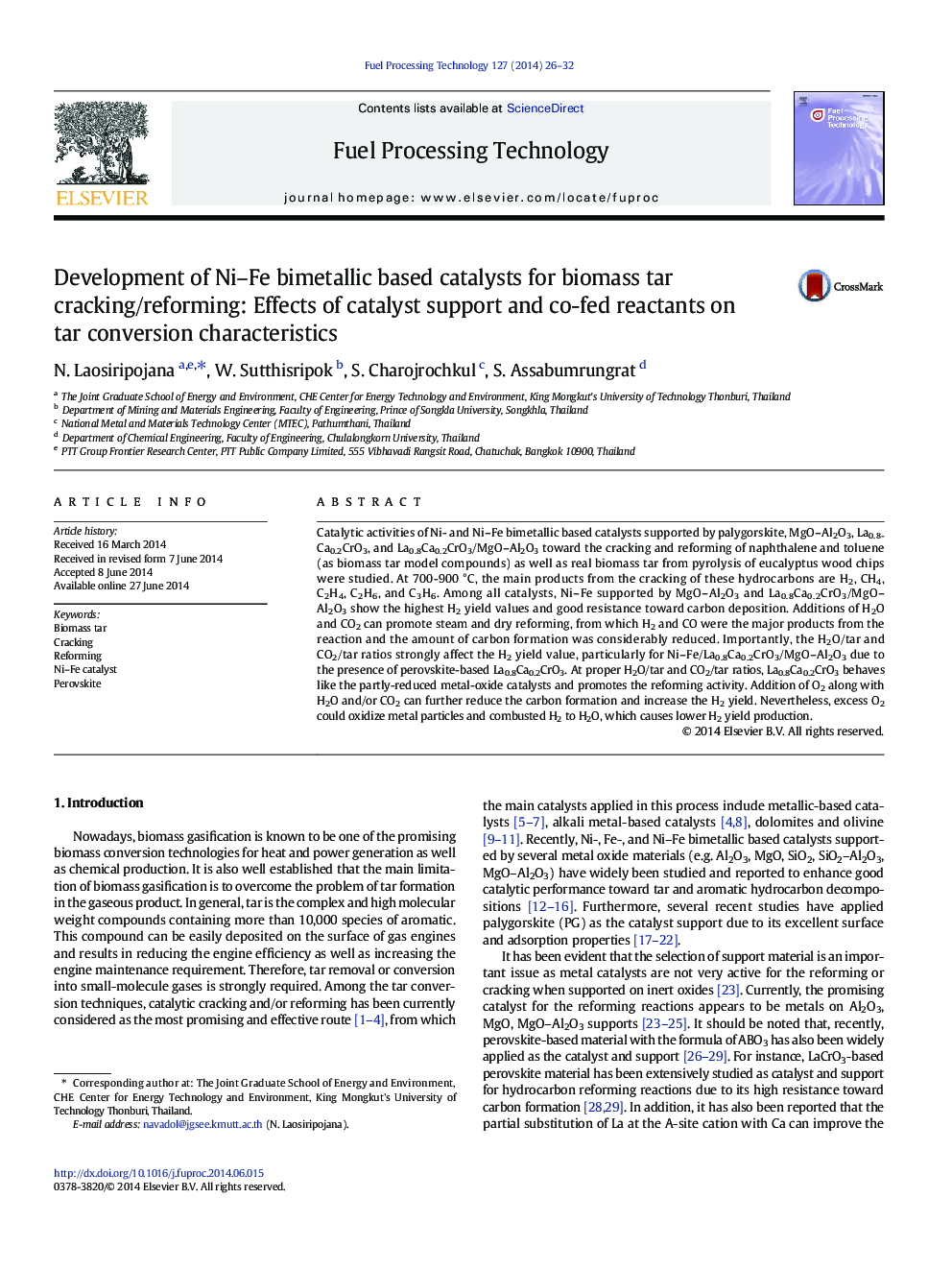| کد مقاله | کد نشریه | سال انتشار | مقاله انگلیسی | نسخه تمام متن |
|---|---|---|---|---|
| 209780 | 461683 | 2014 | 7 صفحه PDF | دانلود رایگان |
• Ni-Fe/La0.8Ca0.2CrO3/MgO-Al2O3 is a good catalyst for cracking and reforming of biomass tar.
• H2O/tar and CO2/tar ratios affect tar conversion and H2 yield due to the presence of La0.8Ca0.2CrO3.
• Addition of O2 improves H2 yield but excess O2 oxidizes metal particles and combusts H2 to H2O.
Catalytic activities of Ni- and Ni–Fe bimetallic based catalysts supported by palygorskite, MgO–Al2O3, La0.8Ca0.2CrO3, and La0.8Ca0.2CrO3/MgO–Al2O3 toward the cracking and reforming of naphthalene and toluene (as biomass tar model compounds) as well as real biomass tar from pyrolysis of eucalyptus wood chips were studied. At 700-900 °C, the main products from the cracking of these hydrocarbons are H2, CH4, C2H4, C2H6, and C3H6. Among all catalysts, Ni–Fe supported by MgO–Al2O3 and La0.8Ca0.2CrO3/MgO–Al2O3 show the highest H2 yield values and good resistance toward carbon deposition. Additions of H2O and CO2 can promote steam and dry reforming, from which H2 and CO were the major products from the reaction and the amount of carbon formation was considerably reduced. Importantly, the H2O/tar and CO2/tar ratios strongly affect the H2 yield value, particularly for Ni–Fe/La0.8Ca0.2CrO3/MgO–Al2O3 due to the presence of perovskite-based La0.8Ca0.2CrO3. At proper H2O/tar and CO2/tar ratios, La0.8Ca0.2CrO3 behaves like the partly-reduced metal-oxide catalysts and promotes the reforming activity. Addition of O2 along with H2O and/or CO2 can further reduce the carbon formation and increase the H2 yield. Nevertheless, excess O2 could oxidize metal particles and combusted H2 to H2O, which causes lower H2 yield production.
Journal: Fuel Processing Technology - Volume 127, November 2014, Pages 26–32
